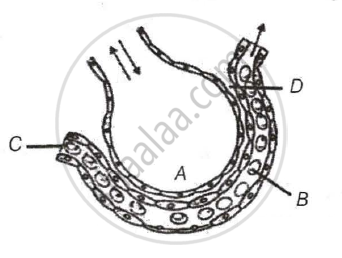Advertisements
Advertisements
Question
Distinguish between inspiration and expiration.
Solution
| No. | Inspiration | Expiration |
| i. | Atmospheric air is taken into the lungs. | Air rushes out from the lungs. |
| ii. | It is an active process. | It is a passive process. |
| iii. | Contraction of external intercostal muscles occurs. | Relaxation of external intercostal muscles occurs. |
| iv. | Diaphragm contracts and becomes flattened. | Diaphragm relaxes and becomes original dome shaped. |
| v. | Increase in volume of thoracic cavity. | Decrease in volume of thoracic cavity. |
APPEARS IN
RELATED QUESTIONS
Describe non-cyclic photophosphorylation with schematic representation. Give its significance.
Normal range of breathing rate per minute in an average adult person at rest is ______.
The size of the chest cavity increases during inhalation.
Define Bohr effect and Haldane effect.
The Tidal Volume of a normal person is ______.
Vital capacity is ______.
After a long deep breath, we do not respire for some seconds due to ______.
Resistance in the airways is typically low. Why? Give two reasons.
The partial pressures (in mm Hg) of oxygen (O2) and carbon dioxide (CO2) at alveoli (the site of diffusion) are ______
The figure given below shows a small part of human lung where exchange of gas takes place. In which one of the options given below, the one part A, B, C or D is correctly identified along with its function.

